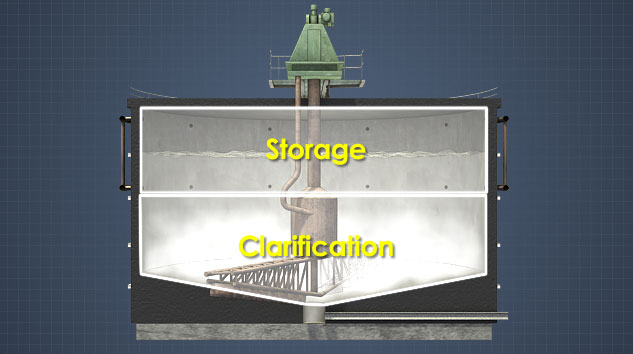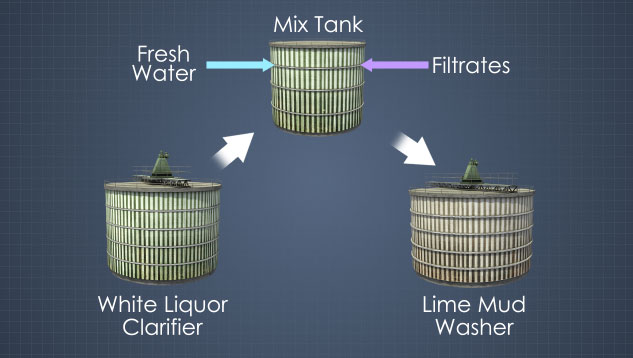




Lime Mud Washers
Lime mud pumped from the white liquor clarifiers still contains a significant amount of white liquor. This liquor must be removed from the mud before the mud is sent to the kiln, or it will cause ring formation in the kiln and increased sulfur emissions. In order to remove the white liquor, the mud is mixed with water and filtrates, and then resettled in a sedimentation clarifier. This module will identify and describe the major components of a lime mud washer.
Request a demoCourse Details
Learning Objectives
• Identify and describe the major components of a lime mud washer
• Describe the purpose and operation of a lime mud washer
• Identify and describe the typical process flows in a lime mud washer
• Describe the negative impacts of improperly washed/filtered lime mud
• Identify key safety considerations when working around a lime mud washer
Specs
| Course Level | Intermediate |
| Languages | English, Portuguese |
| Compatibility | Audio, Video |
| Based on: | Industry Standards and Best Practices |
Key Questions
Why does lime mud need to be washed?
Lime mud from the white liquor clarifier still contains a significant amount of white liquor. If the white liquor is left in the mud it will interfer with the calcining process in the kiln.
Where does lime mud come from?
Lime mud is calcium carbonate which has settled out of the white liquor in the white liquor clarifier.
What is the principle behind a lime mud washer?
Most lime mud washers are dilution washers. The mud is mixed with a large quantity of relatively clean liquor, and the washed mud is settled out in a clarifier.
What can happen if mud is not properly washed?
Poorly washed mud can lead to an increase in sulfur emissions from the lime kiln and/or to the formation of rings in the lime kiln.
What is weak wash?
Weak wash is the low concentration clarifier liquor which is created in the lime mud washer.
Sample Video Transcript
The diluted mud enters the clarifier at the top and is discharged through a center feedwell. This semi-enclosed area provides a small mixing and buffer zone, slows the flow and evenly distributes the incoming mixture into the clarifier.
Course Applies To
Demos + Pricing
Learn more about our courses, get pricing, and see our platform.











